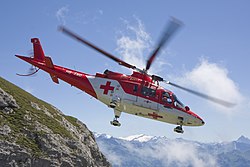References
- ↑ Aerodreams | Products Archived 8 July 2012 at the Wayback Machine
- ↑ "Авиационная промышленность стран Латинской Америки".
- 1 2 "Desarrollo de Helicópteros en la Argentina - Imágenes". Taringa!. 21 February 2006.
- 1 2 3 4 5 6 7 Apostolo p. 122
- ↑ "China's largest export orders helicopters: the Argentine purchase of 11 straight assembly line | Beria-TG". Beriat.org. Archived from the original on 26 April 2012. Retrieved 9 July 2012.
- ↑ "Argentine Minister of Defense nos ofrecieron cooperación tecnológica en materia de radares y helicópteros y, en ese caso, no hicimos opción de la misma,". Archived from the original on 28 September 2011.
- ↑ Judy Rumerman. "Helicopter Development in the Early Twentieth Century". U.S. Centennial of Flight Commission. Archived from the original on 5 May 2012. Retrieved 6 May 2012.
- ↑ "S.A. PESCARA HELICOPTERACION", Flight: 50, 25 January 1923
- ↑ Australian Aerospace Press Release (July 2009). "Australian Aerospace Farewells The Grande Dame Of The Skies" . Retrieved 18 December 2009.[ dead link ]
- 1 2 3 4 5 6 Apostolo p. 121
- ↑ Helibras, retrieved 18 August 2022
- 1 2 Apostolo p. 44
- 1 2 Apostolo p. 119
- 1 2 Apostolo p. 120
- ↑ "Welcome to Aircraft Factory Egypt Website". Aoi.com.eg. Archived from the original on 22 April 2012. Retrieved 9 July 2012.
- 1 2 Apostolo p. 60
- ↑ "Helicopter mit dem Citroën Comotor Wankelmotor". Der-wankelmotor.de. Retrieved 9 July 2012.
- 1 2 3 4 Apostolo p. 124
- ↑ Apostolo p. 93
- 1 2 Apostolo p. 59
- 1 2 Apostolo p. 63
- ↑ Apostolo p. 18
- ↑ Apostolo p. 16
- 1 2 Apostolo p. 74
- ↑ Apostolo p. 41
- 1 2 Apostolo p. 92
- ↑ Apostolo p. 73
- 1 2 3 Apostolo p. 125
- ↑ Skomra, Sławomir (February 2010). "Już nie ma PZL Świdnik. Jest AgustaWestland Świdnik in Gazeta Wyborcza" . Retrieved 17 April 2010.
- 1 2 Apostolo p. 108
- ↑ Kamov (n.d.). "Продукция (Russian language)". Archived from the original on 28 February 2009. Retrieved 18 December 2009.
- ↑ fas.org (August 2000). "Kazan Helicopter Plant (KHP)" . Retrieved 18 December 2009.
- ↑ Pike, John (April 2006). "Kazan Helicopter Plant (KHP)". Archived from the original on 14 April 2013. Retrieved 18 December 2009.
- ↑ Borodulin, Vladislav (December 2007). "Helicopter industry overview for Russia". Archived from the original on 13 December 2009. Retrieved 18 December 2009.
- ↑ Apostolo p. 111
- ↑ "RotorWay International - Premiere Kit Helicopters". Archived from the original on 19 September 2014. Retrieved 21 September 2014.
- ↑ Apostolo p. 40
- ↑ "Home page – marenco". Marenco-swisshelicopter.ch. Archived from the original on 13 June 2013. Retrieved 7 May 2013.
- 1 2 Apostolo p. 21
- ↑ Apostolo p. 66
- ↑ Apostolo p. 80
- 1 2 Apostolo p. 101
- 1 2 Apostolo p. 102
- ↑ Apostolo p. 45
- ↑ Apostolo p. 56
- ↑ "Brantley company profile". Archived from the original on 2 February 2016.
- ↑ Carter Aviation Technologies (November 2009). "Carter Aviation Technologies". Archived from the original on 14 October 1997. Retrieved 20 December 2009.
- ↑ Apostolo p. 62
- ↑ Apostolo p. 64
- 1 2 Apostolo p. 65
- 1 2 Apostolo p. 67
- ↑ Apostolo p. 123
- ↑ Apostolo p. 69
- ↑ Apostolo p. 72
- ↑ Apostolo p. 77
- ↑ Apostolo p. 81
- ↑ "Schweizer RSG". main website. Schweizer RSG.
Bibliography
- Apostolo, Giorgio. The Illustrated Encyclopedia of Helicopters, Bonanza Books, New York, 1984. ISBN 0-517-43935-2.
